Red Sox memories: Boston’s Dead Ball Era All-Star team
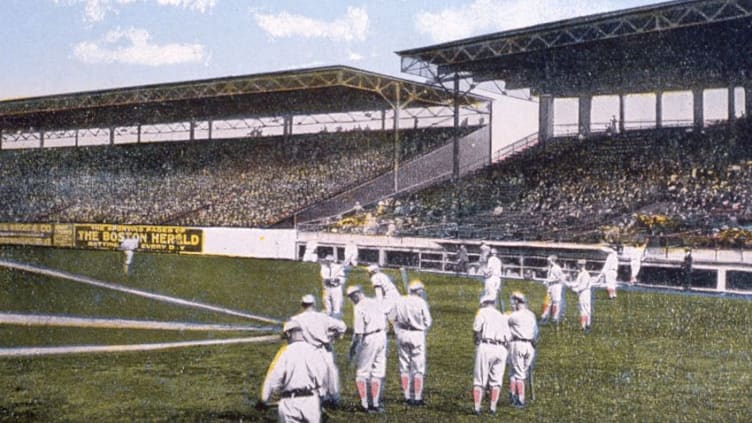
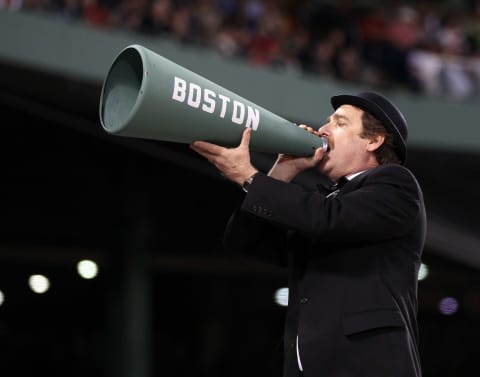
The past is certainly important and especially in baseball. The Boston Red Sox were a dominant team for the first two decades of the 20th century and here are the reasons why.
There are epochs in baseball history and the one that has intrigued me is the Dead Ball Era. Two gentlemen provided me with a wealth of primary knowledge regarding that period in baseball and their stories still resonate with me today. Both followed Boston baseball before there was a Red Sox team so I had a verbal tutorial that stretched from Honus Wagner to Tony Conigliaro.
As I aged, baseball has woken up to a far more diligent investigation of its past. The Society of American Baseball Research (SABR) has crafted books and programs around the Dead Ball Era. Authors such as Charles Alexander have covered the era with numerous biographies that have been meticulous research.
“The Deadball Era was a period in the early 20th Century characterized by low scoring and an emphasis on pitching and defense. While its boundaries are not concrete, it is generally recognized to have stretched from the founding of the American League in 1901 to the elimination of the spitball in1920,” per Baseball-Reference.
The Red Sox of the Dead Ball Era was the best of the best from winning the first World Series in 1903 to a series of championships for 1912, ’15, ’16, and ’18 until the team was dismantled. Boston also experienced the ballpark revolution of that period as they escaped the Huntington Avenue ballpark for a new one in 1912 that is used today.
Now a look at my All-Stars from that era.
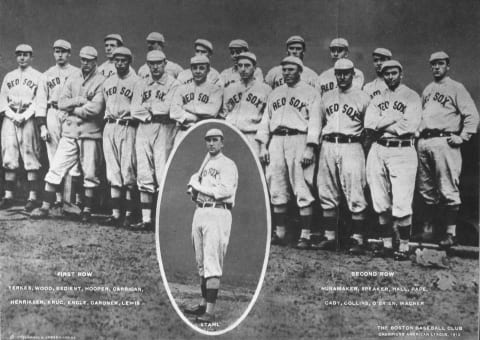
First Base
Jake Stahl was no relation to teammate Chick Stahl, but Jake could hit home runs and strikeout. In 1910, Stahl led the AL in home runs with ten. He also set a record that stood for almost 30 years with 128 whiffs. Stahl played six seasons for the Red Sox hitting 21 home runs and batting .277.
In 1912, Stahl was player-manager for the 105-win Red Sox only to resign mid-way through the 1913 season as the team hit the skids and the clubhouse became a religious war zone.
Stahl has left one interesting legacy and that is the baseball term to “Jake it” meaning not to play with intensity or loafing. The reasoning is Stahl often removed himself from the lineup, but as a manager that was his decision. Stahl died at 43-years-old from Tuberculosis.
Honorable Mention: The Red Sox had a future dentist on the 1967 team in Jim Lonborg and the 1915-16 teams had one in left-hand hitting Dick Hoblitzell who was cleverly nicknamed “Doc.” Hoblitzell was also drafted into the military in 1918 and never returned to MB. In five Boston seasons, Hoblitzell hit .269.
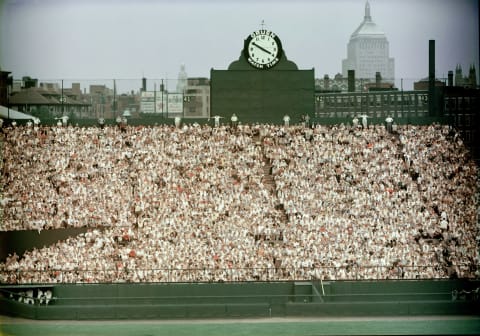
Second Base
The more things change the more they stay the same at second base be it the Dead Ball Era or today. The Red Sox shifted through a collection of second basemen in that era so my selection is another player-manager in right-hand hitting Jack Barry. Barry came to Boston as a shortstop via a fire sale by A’s owner Connie Mack but became stationed at second.
Barry’s first two seasons were championships and in 1917 Barry also took over as manager. That is where Barry really stepped up, but it was not baseball as he enlisted in the military as the nation went to war. Barry missed the 1918 season and retired after a poor 1919. That started his second career as a baseball coach for Holy Cross for 40 years.
Honorable Mention: Winning championships carriers weight and Hobe Ferris hit .251 for the 1903 team coupled with solid defense. Ferris played nine seasons in the majors and has a interesting statistic – a career .265 OBP.
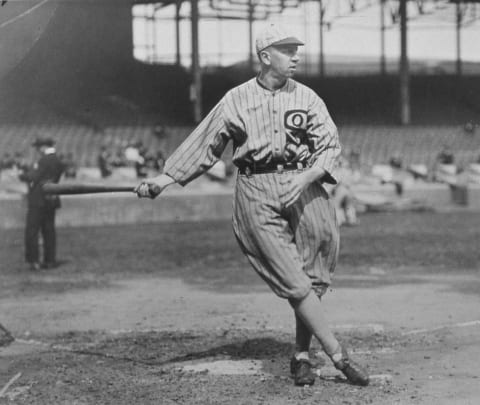
Third Base
The easy selection is a Baseball Hall of Fame member who played for both Boston teams – Jimmy Collins. Collins switched sides in 1901 and came to the Red Sox where he also became player-manager – a rather common thread in the Dead Ball Era. Collins was at the helm in 1903 as the Red Sox defeated the Pirates to grab the first modern-day World Series.
Collins was a superb fielder at third and a defensive innovator, but his bat also spoke well hitting .294 in 14 MLB seasons. In his seven Red Sox seasons, Collins hit .296. With the Braves in 1898, Collins led the NL with 15 home runs.
Collins was enticed to switch loyalties with a substantial bonus – reported to be $3,500 – and the Manager’s job. This was the beginning of a fiscal war between the NL and the fledgling AL and Collins was recognized as the best in the business at third.
Honorable Mention: When Collins left Boston his replacement was a left-hand hitter who played on three World Series champions – Larry Gardner. Gardner was a rare college player who joined the Red Sox right out of the University of Vermont. In 10 seasons Gardner hit .282.
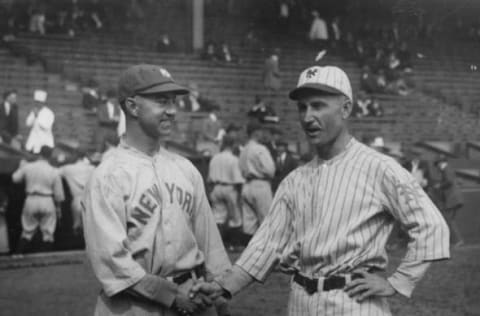
Shortstop
Everett Scott was recognized as the premier defensive player at short. Scott played eight seasons for Boston hitting .246 with minimal power. Scott was there for his glove and his leadership as team captain a role he later had when he was traded to the New York Yankees.
Scott played in three World Series for Boston and another two for the Yankees. Scott also once held the consecutive games played record at 577. Of note is Scott once wrote a children’s book – Third Base Thatcher.
Scott also had a degree of loyalty turning down a substantial contract offer to jump to the newly founded Federal League in 1913. The remarkable part was Scott had not yet played in an MLB game.
Honorable Mention: Quite possibly the equal to Scott was Freddy Parent who was also recognized for his defense but had a bit more snap with the bat than Scott. Parent played seven solid years in Boston hitting .273. Parent hit .282 in the 1903 World Series and was the last surviving member of that team when he died in 1972.
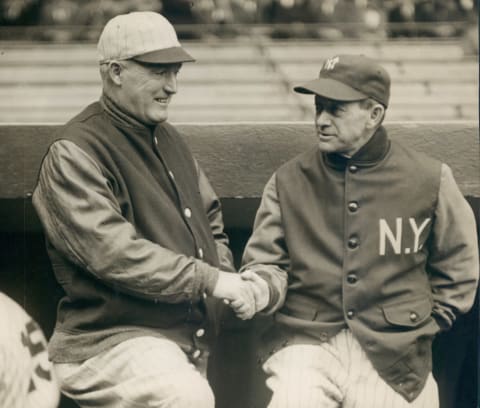
Catcher
Bill Carrigan is the only Red Sox manager to win back-to-back World Series titles and it was accomplished in 1915 and 1916. Carrigan, like many of his contemporaries, was a player-manager. He replaced Stahl in 1913 and part of it was internal issues over religion and part of it was the team was sinking after winning a title.
Carrigan was noted for his rough demeanor and even had “Rough” as a nickname. Skilled defensively and hitting just .257 in his ten-year Boston career. Carrigan was also an astute businessman who retired to spend more time with his business interests and family, but it was not over for Carrigan and the Red Sox.
In the 1920s, Carrigan returned to the Red Sox to manage a woeful team and it showed that even Carrigan had no power to rescue the team losing 299 games in three seasons (1927-29). Carrigan despite the pleadings of ownership resigned and never looked back.
Honorable Mention: Being on a championship team as a catcher gets a nod for Lou Criger who was noted for his defensive skills and arm. In an age when small ball meant base stealing Criger three times led the AL in CS% while with Boston. Criger hit just .222 in his career so this was the Sandy Leon of the first Red Sox decade.
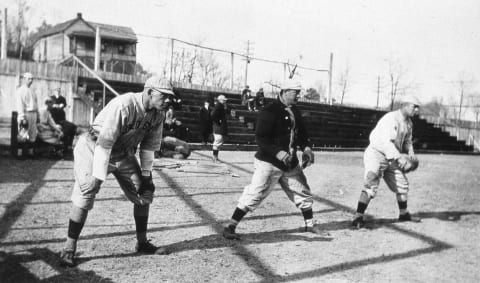
Outfield
The best of the greatest outfield in Red Sox history was left-hand hitting Tris Speaker. The Grey Eagle joined Boston as a 19-year-old in 1907 and left after 1915, traded in a salary dispute. In those nine seasons, Speaker hit .337 and left behind a litany of legendary fielding plays.
He played an extremely shallow center field and the end result was Speaker is the career record holder for assists, double plays and unassisted double plays by an outfielder. Speaker retired as the all-time MLB leader in doubles (792) and an MVP Award in 1912. A member of the Hall of Fame.
A second member of the HOF is another left-hand hitter with defensive skills that few could match – Harry Hooper – who played on four championship Red Sox teams. Hooper hit .272 for the Red Sox in 12 seasons before being traded to the Chicago White Sox and hit .302 in five seasons with Chicago.
The final member of the Golden Outfield is right-hand hitting Duffy Lewis whose remarkable ability to master the slope in left field at Fenway Park in front of the Green Monster led to a term long gone. The incline became known as “Duffy’s Cliff’ for his ability to traverse the incline and make fielding gems. Lewis played eight seasons with the Red Sox hitting .289 and played on three championship teams – missing out in 1918 severing his country. Lewis joined the exodus to the Yankees in 1919.
Honorable Mention: You have to find a place for a pure slugger and that was Buck Freeman. Freeman was another “jumper” from the Braves who switched to the Red Sox for their inaugural season. Freeman played first base, but eventually went to the outfield and hit a league-best 13 home runs and 104 RBI in 1903. Freeman is a member of the Red Sox HOF.
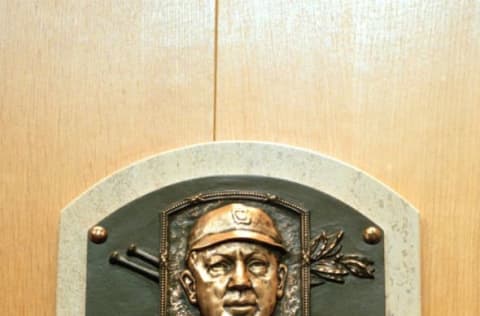
Pitcher
The right-hander is rather a simple selection when you have the most prestigious award for pitchers named after you. Cy Young holds the career record for wins and the Red Sox record for wins. The durable right-hander three times led the AL in wins while toiling for the Red Sox. And if you want the best closer for the Dead Ball Era it is again Young who three times led the AL in saves while with the Red Sox.
Young came to Boston as part of the great diaspora from the NL as the two leagues engaged in a war for talent. Young was a big catch for both his size and ability as one of the best. How good? Young 14 times led MLB with the lowest BB/9. Remarkable control. At age 41 Young went 21-11 and was rewarded for his efforts by being traded.
Honorable Mention: Just one season is enough to put Smoky Joe Wood into this position. In 1912, Wood did it all with a 34-5 record including a league-best 35 complete games and 10 shutouts. Wood also hit. The previous season Wood won 23, but now came the arm issue, a trade to Cleveland, and a second career as an outfielder.
The left-hander has to be Babe Ruth who went 89-46 with the Red Sox. In two World Series, Ruth won three games and twice won 20+ with the Red Sox and led the AL with a 1.75 ERA in 1916 and allowed no home runs pitching. In 1918, Ruth went 13-7 from the mound and led the AL with 11 home runs.
In 1915, rookie Ruth won 18 games and led the team with four home runs in just 92 at-bats. Ruth was an established pitcher and considered arguably the best or close to the best left-hander in the league. Some of Ruth’s pitching match-ups against the great Walter Johnson have taken on a life of their own.
Next. Ted Williams deserved more MVP Awards. dark
Honorable Mention: Dutch Leonard won two World Series games for the Red Sox and finished his six Boston seasons 90-64. Leonard also set the modern-era record for the lowest single-season ERA at 0.96 in 1914. Leonard also tossed two no-hitters while a Red Sox.